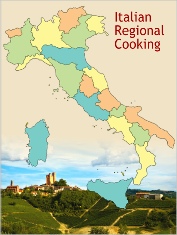













JOIN NOW
our Italian Cooking
Newsletter

Publication or use of pictures, recipes, articles, or any other material form my Web site, on or off-line without written permission from the author is prohibited. If you would like to use my articles on your Web site or in your publication, contact me for details. Avoid infringing copyright law and its consequences: read the article 7 Online Copyright Myths by Judith Kallos
Copyright © 2003 - 2011 Anna Maria Volpi - All Rights reserved.
Anna Maria's Open Kitchen Site Map







Some More Hot Topics You'd Like to See adv.





ALMOND [...] from Wikipedia the free encyclopedia.
There are two forms of the plant, one (often with white flowers) producing sweet almonds, and the other (often with pink flowers) producing bitter almonds. The kernel of the former contains a fixed oil and emulsion. As late as the early 20th century, it was used internally in medicine, with the stipulation that it must not be adulterated with the bitter almond; it remains fairly popular in alternative medicine, particularly as a carrier oil in aroma therapy, but has fallen out of prescription among doctors.

The bitter almond is rather broader and shorter than the sweet almond, and contains about 50% of the fixed oil which also occurs in sweet almonds. It also contains a ferment emulsion which, in the presence of water, acts on a soluble glycoside, amygdaline, yielding glucose, cyanide and the essential oil of bitter almonds or benzaldehyde. Bitter almonds may yield from 6 to 8% of prussic acid (also known as hydrogen cyanide). Extract of bitter almond was once used medicinally but even in small doses is severe and in larger doses can be deadly; the prussic acid must be removed before consumption.

Almond
LA POMONA ITALIANA (1)
Part of the plum family, the almond tree is native to the Mediterranean. Since the
almond grows in mild climates, the largest producers are Italy, Spain, Portugal,
and California. Spanish missionaries are credited for bringing the almond to California,
which is now the world's largest producer.
The bitter almond is a cousin to the sweet almond and contains in its raw state traces of lethal prussic acid. Five unprocessed bitter almonds can be toxic for a child and fifteen can be lethal for an adult. Although the toxicity is destroyed by heat, the sale of unrefined bitter almonds is prohibited in the United States.
Bitter almonds are successfully processed to make almond extract and almond-flavored liqueurs free of the toxins. Prussic acid is also found in the pits of peaches and apricots.
Note that bitter almonds can only develop their aroma if water is present. Almond essence is well suited to flavor cookies, cakes, and marzipan. Because it is very strong, care must be taken not to use too much. If it is not available, kernels of peach or apricot can also be used.
Whole almonds can easily be found in grocery stores already peeled. If you do not find them, and you need to remove the skins, drop the almonds in boiling water. Blanch the almonds for about 2 minutes and drain them. You will then easily be able to remove the skins. Spread the almonds on an oven pan and place them in the oven in moderate heat until they are dry.















